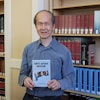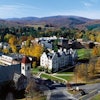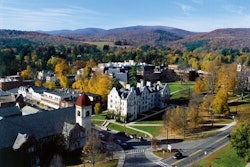With a frequency that began to trouble directors of the Ellis Island Immigration Museum, visitors to that famous exhibit in New York Harbor leveled a legitimate complaint.
“’This is a great museum, but my story isn’t told here,’” said Statue of Liberty-Ellis Island spokeswoman Peg Zitko, repeating what patrons had noted. “It wasn’t as compelling to them.”
This grievance is expected to dissipate with October’s opening of the first phase of the island’s Peopling of America Center. Its multiracial advisory board, of mainly university-based researchers, says the center will present a fact-based, un-romanticized panorama of those who’ve landed in the United States, how they got here and what they confronted during and after the journey.
“The idea is to fill out the story,” said American University history professor, Dr. Alan Kraut, the advisory board’s chairman. “This current [wave of] immigration promises to be the largest in American history … . It struck us that this is a perfect time, not just to praise immigration as a positive force, but to tell the whole story, including the warts.”
Presently, 38 million people in the United States are identified as foreign-born. That’s 12.8 percent of the population, compared to 14 percent in 1911, said Kraut, a non-resident fellow at the Migration Policy Institute in Washington, D.C.
That current figure on the foreign-born includes an estimated 12 million undocumented immigrants whose presence has fueled continued debate.
“‘America beckons, but Americans repel,’” said Kraut, borrowing an old saying, attributed to an anonymous immigrant.
If Latino immigrants are facing hostilities due, at least in part, to their outsider status, they are not the first. As their numbers began to surge during the 1830s and 1840s, immigrants from Ireland’s southern provinces were disparaged as “poor, unwashed and Catholic,” said Kraut, also vice president of the Organization of American Historians. Beginning in the 1850s, “there was a nativist backlash against the Germans because they didn’t speak English,” she added.
From Africa, the shackled slaves were coerced. Annexation and conquest led to whole swaths of Mexico, with its own indigenous peoples, becoming part of the United States.
The Japanese were forced into detention camps. Impoverished Chinese, arriving to help build a national railroad system, faced prejudice, lynchings and the Chinese Exclusionary Act of 1882.
The eugenics movement, peaking in the mid-20th Century, espoused a race- and income-based hierarchy of peoples. Those and other subjects will be taken up by the high-tech, interactive, multimedia Peopling Center.
“It’s not merely a glorious story of success and achievement; there is also tragedy involved,” said Dr. Victor Greene, a University of Wisconsin at Milwaukee professor emeritus of history and another Ellis Island adviser. The peopling project “includes the stories of relationships between groups … beginning with the Indians, the original settlers here. Its scope and its approach, clearly, are unprecedented, and it’s going to be a marvelous educational aid.”
Dr. John Haworth, director of the National Museum of American Indian in Manhattan, said, “There are certain ideas in our American history about Western expansion and the development of railroads, the very complicated conflicts between [White] settlers and Indians … . The story of those [human] contacts is so very important to this.”
The National Park Service runs the Statue of Liberty National Monument that encompasses Ellis Island, an immigrant processing, then a detention and deportation center, between 1892 and 1954. The federal agency and Statue of Liberty-Ellis Island Foundation have been honing the history lessons conveyed through that complex since the 1980s.
The Peopling Center will be rolled out in the two phases, with the first chronicling migration patterns before 1892 and the second, slated to open in early 2013, post-1954 migration. The 20,000-square-foot center—the current museum’s exhibition space is 100,000 square feet—will rely heavily on narratives and images, Kraut said.
“There will be timelines, lots and lots of pictures, voices, a big glass globe … on which the patterns of migration will be projected,” he said. “There are themes of leaving home, the journey, arrival, struggle and survival … a separate citizenship gallery focusing, not on groups, but on the process of how to become a citizen and how they did it in the past.”
Zitko, vice president of public affairs for the Statue of Liberty-Ellis Island Foundation, said the addition is expected to drive more traffic to the national monument.
And, said the Indian museum’s Haworth, to the entire tourist district in downtown Manhattan. Other destinations in the vicinity include the forthcoming September 11 Memorial & Museum, the African Burial Grounds, the Museum of American Finance on Wall Street, and the Smithsonian Institution facility run by Haworth, another member of the Ellis Island advisory panel. Researchers from Columbia University’s Center for the Study of Race and Ethnicity and the University of Southern California’s Center for Diversity and Democracy also are advisers.
Their collective input has been essential to broadening the peopling story, said Kraut, who grew up in the Bronx, a New York neighborhood made up of, among others, Italians, East European Jews, and West Indian families such as that of former National Security Adviser Colin Powell.
“The current population of the United States is only partially aware of the history,” Kraut added. “Some celebrate the history because it involved their relatives and they want to mythologize that. And some want to demonize [current] immigration as something that is taking away jobs from Americans. The museum wants to penetrate that mythology by telling exactly how America became peopled … . The immigrant story is the American story.”















